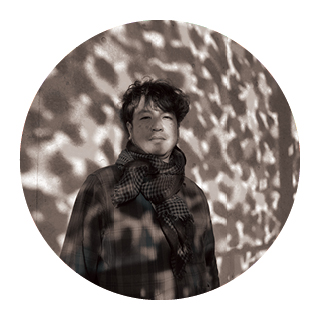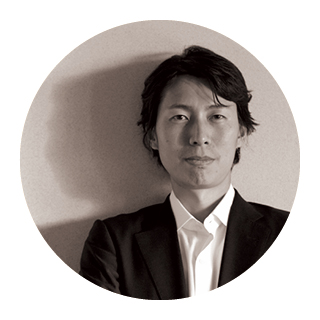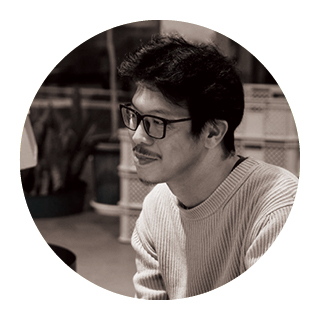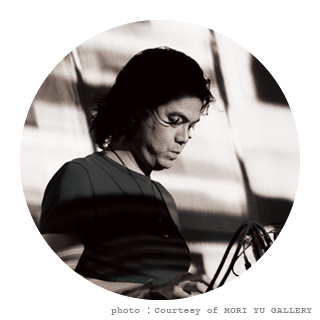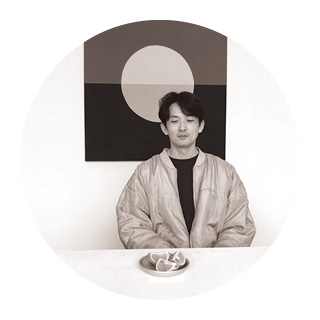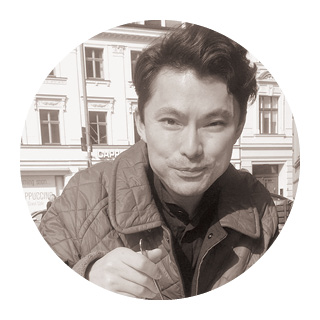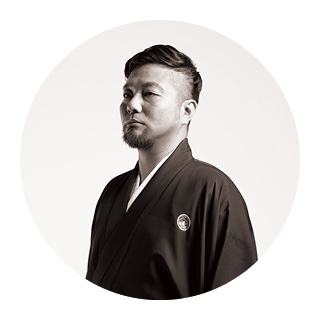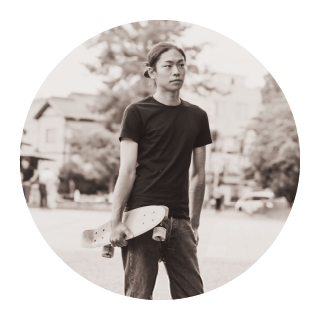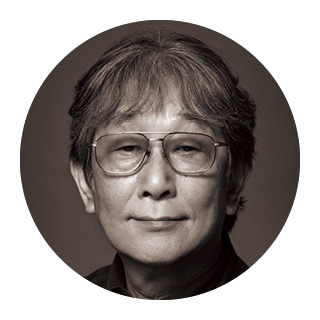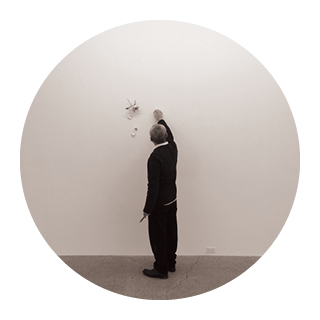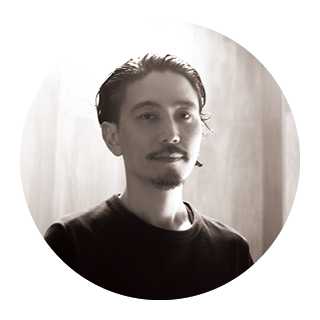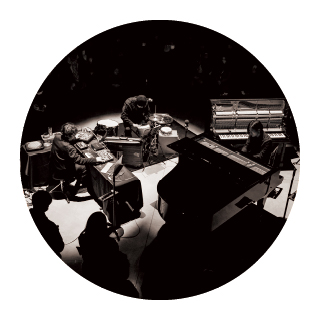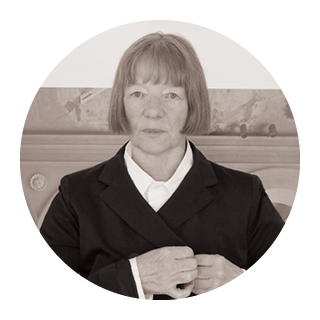
カンディダ・ヘーファー
Candida Höfer1944年、ドイツ、エーバースヴァルデ生まれの写真家。図書館、博物館、ホテル、美術館などの文化的・制度的建造物にレンズを向け、建築物のインテリアを緻密に構成した大判写真で知られる。
撮影には細心の注意を払い、空間の内部構造を最もよく表す対角線や中央線に沿って対象物を配置する。厳格な対称性による秩序は、建築様式などの空間特性を際立たせるとともに、建築物がこれまで歩んできた歴史をも物語る。誰もいない公共の空間や施設に漂う心理的な残骸を捉えたヘーファーの作品は、観る者を引き込み、その場に迷い込んでしまったかのような感覚へと誘う。
バーゼルとベルンのクンストハーレ、パリのルーヴル美術館など世界各地の著名な美術館で展示を行い、2002年の「ドクメンタ11」、2003年の「ヴェネツィア・ビエンナーレ」のドイツ代表にも選ばれるなど、国際的な評価も高い。
Born in 1944 in Eberswalde, Germany, she is a photographer known for his large-format photographs of architectural interiors with her lens on cultural and institutional buildings such as libraries, museums, hotels, and art galleries. She is also known for her large-format photographs of architectural interiors, focusing his lens on cultural and institutional buildings such as libraries, museums, hotels, and art galleries. The order of the works based on strict symmetry emphasizes the spatial characteristics such as the architectural style, and tells the history of the building. Hofer’s work, which captures the psychological debris of empty public spaces and institutions, draws the viewer in and invites them to feel as if they have wandered into the place.
She has exhibited at prestigious museums around the world, including the Kunst Halle in Basel and Bern, the Louvre in Paris, and has been selected to represent Germany at Documenta 11 in 2002 and the Venice Biennale in 2003.
作品タイトル
Reflections on Spaces – Spaces of Reflection
空間への反射 – 反射の空間
ステートメント
カンディダ・ヘーファーの写真は、肖像写真が対峙する人物の内面を捉えるのと同様に文化的建築の室内空間に内在する深遠な「性格」と、それを生み出す力学を鮮明に捉える。写真に写された人々のポーズにその性格が顕著に表れるのと同じように、空間のイメージにはその役割が刻まれ、歴史や用途の痕跡が宿る。提示されたこれらの空間のイメージは、ほとんどが内省的な性質を持つ。知識への内省、精神的探求、世俗的な瞑想、そして権力の反映であると同時に、建築がいかにこれらの内省的性格の意図を形にしてきたかを感じ取ることができる。色彩、構造、細部へのこだわり、そして何より光の反射の扱い方によって、鑑賞者はカンディダ・ヘーファーが捉えたこの定義しがたい「何か」を通じて、これらの空間に思いを馳せ、その時代の歴史や建築のスタイルを発見し、左右対称の厳格な秩序の中の細部に迷い込む可能性がある。一方で、人物の不在は逆説的に現代に至るまでこの空間が人々によってどのように利用されてきたかを強調し、空間の持つ内省的な性格を形成してきた歴史、権力、知識、精神といった様々な力学的バランスを発見し、私たちがその空間そのものに対峙し、⾃分⾃⾝を投影させることを促し、空間が意図する感情を味わうこととなる。
Candida Höfer’s photographs vividly capture the profound “character” inherent in the interior space of cultural architecture and the dynamics that create it, just as portrait photography captures the inner world of the person confronted by the portrait. In the same way that the poses of people in photographs show their personalities, the images of space are engraved with their roles and carry traces of history and use. Most of the images of these spaces presented are introspective in nature. Reflection on knowledge, spiritual inquiry, secular meditation, and reflection of power, as well as a sense of how architecture has embodied the intentions of these introspective characters. Through the color, structure, attention to detail and, above all, the way the reflection of light is handled, the viewer is able to contemplate these spaces through this indefinable “something” captured by Candida Höfer, discover the history and architectural style of the period, and get lost in the details within the strict symmetrical order. On the other hand, the absence of the figure paradoxically emphasizes how the space has been used by people up to the present day, discovering the various mechanical balances of history, power, knowledge, and spirit that have shaped the introspective character of the space, encouraging us to confront the space itself, to project ourselves, and to experience the emotions intended by the space.
展示作品
BNF Paris 1998
《フランス国⽴図書館、パリ 1998年》
1998年にフランス国立図書館(BNF)は新たな拡張部分を追加した。それは現在「フランソワ・ミッテラン館」として知られている。拡張の際に、カンディダは旧館である「リシュリュー館」と新しい拡張部分の両方での写真撮影を依頼された。この作品は、旧館の読書室の一つで撮影されたものである。この場所は有名な「Salle Ovale(楕円形閲覧室)」という名前の通り、楕円形の広々とした閲覧室として知られている。カンディダはその⼤きさだけでなく、ガラス窓から差し込む⾃然光とテーブルを照らす⼈⼯光の重なりに感銘を受けそれらを象徴的に捉えた。
In 1998, the Bibliothèque Nationale de France (BNF) added a new extension. It is now known as the “Palais François Mitterrand”. Upon the expansion, Candida was asked to take photographs of both the old Richelieu building and the new extension. This work was taken in one of the reading rooms of the old building. This place is known as the famous “Salle Ovale” (Oval Reading Room), a spac BNF Paris 1998
ious oval reading room. Candida was impressed not only by its size, but also by the overlap of natural light coming in through the glass windows and the artificial light illuminating the table, and captured them symbolically.
MOCA Los Angeles II 2000
《ロサンゼルス現代美術館 II 2000年》
ロサンゼルス現代美術館(MOCA)は、アメリカ合衆国カリフォルニア州ロサンゼルスにある現代美術館で、1979年に設立された。美術館は三つの施設から成り立っており、印象的なアーチ型の天井を持つMOCA Grand Avenueは、故磯崎新氏によってデザインされ、1986年に完成した。この建築は、磯崎氏の都市的でモダンなスタイルを体現しており、ロサンゼルスの文化的ランドマークとして、美術館と都市との関連性を強化し、ダウンタウンエリアの再生にも貢献している。このプロジェクトは、彼の国際的なキャリアの中で特に重要な位置を占めている。カンディダはこの場所を訪れたとき、アーチ天井そのものを外部から撮るよりも、アーチ天井内部の眺めはどんなものだろうと興味を持ち、そのアイディアを採用し、研究書類のあるアーチの内側からという貴重で重要なイメージを捉え、本作MOCA Los Angeles II 2000を作成した。
The Museum of Contemporary Art Los Angeles (MOCA) is a contemporary art museum in Los Angeles, California, United States, founded in 1979. The museum consists of three facilities, and MOCA Grand Avenue, with its impressive vaulted ceiling, was designed by the late Arata Isozaki and completed in 1986. The architecture embodies Isozaki’s urban, modern style, and as a cultural landmark in Los Angeles, it reinforces the museum’s connection to the city and contributes to the revitalization of the downtown area. The project occupies a particularly important place in his international career. When Candida visited the site, she was more interested in what the view inside the vault would be like than to photograph the vault itself from the outside, so she adopted that idea and created the MOCA Los Angeles II 2000 work, capturing a valuable and important image from inside the arch with research documents.
Koninklijk Instituut voor de Tropen Amsterdam I 2003
《王⽴熱帯研究所 アムステルダム I 2003年》
オランダの図書館で撮影し、オランダの図書館員を撮影するというアイデアから写真集と写真展のプロジェクトが始動した。その結果、20館以上のオランダの図書館のシリーズができあがった。アムステルダムにあるKoninklijk Instituut voor de Tropen(王立熱帯研究所)の図書閲覧室はそのひとつである。このネオ・ルネッサンス様式の印象的な建物は1926年に設立され、1950年代初頭までは植民地博物館であった。その後、「ヘルスケア、ジェンダー、経済発展、異文化協力」に焦点を当てた王立熱帯研究所となっている。しかし、2012年にこの図書館はオランダ政府からの補助金が打ち切られたため、資金不足となり、この図書館は2013年から閉鎖されている。2003年に撮影したカンディダのイメージはすでに、本よりも窓や光や空虚さに焦点を当てており、すでに未来を見据えているようにも思える。
The idea of photographing a Dutch librarian in a Dutch library led to the launch of a photo book and photo exhibition project. The result is a series of more than 20 Dutch libraries. The reading room of the Koninklijk Instituut voor de Tropen (Royal Institute of the Tropics) in Amsterdam is one of them. This impressive neo-Renaissance building was founded in 1926 and was a colonial museum until the early 1950s, when it became the Royal Institute of the Tropics, focusing on “health care, gender, economic development and cross-cultural cooperation”. However, in 2012, the library ran out of funds due to the discontinuation of subsidies from the Dutch government, and the library has been closed since 2013. Candida’s images taken in 2003 already seem to be looking to the future, focusing more on windows, light, and emptiness than on books.
Bibliothèque Sainte-Geneviève Paris II 1997
《サント・ジュヌヴィエーヴ図書館 パリ Ⅱ 1997年》
かつて、フランス、パリにあったカトリック教会の修道院、サント=ジュヌヴィエーヴ修道院。その修道院の資産であった図書館がサント=ジュヌヴィエーヴ図書館である。天文学者アレクサンドル・パングレはこの図書館の司書でもあった。建築家はアンリ・ラブルストで、彼は国立図書館での仕事の前にこの図書館を設計していた。その設立は1847年とフランスの国立図書館の設立1868年よりも20年ほど早く、他の施設に併設されることなく、図書館として建てられたフランス初の建物である。天井の形と使⽤されている素材は、この場所の宗教的な歴史と技術進歩への信念を結びつける⼯業的なバシリカ建築様式(⻑堂式の格式⾼い教会建築)を印象的に浮かび上がらせている。カンディダは、その機能性(窓)と装飾としての技術(鉄の円弧)の組み合わせに感銘を受け、この場所を撮影した。
The Abbey of Sainte=Geneviève was once a Catholic monastery in Paris, France. The Sainte=Geneviève Library was the property of the abbey. The astronomer Alexandre Pangret was also the librarian of the library. The architect was Henri Labust, who had designed the library before his work at the National Library. It was founded in 1847, about 20 years before the establishment of the National Library of France in 1868, and was the first building in France to be built as an independent library, not being attached to other facilities. The shape and materials of the ceiling strike the industrial basilica architecture (a formal church building of the long hall) that links the religious history of the place with the belief in technological progress. Candida photographed the place, impressed by the combination of its functionality (windows) and its technique as decoration (iron arcs).
Stiftsbibliothek St.Gallen II 2001
《ザンクト・ガレン図書館 II 2001年》
ザンクト・ガレン修道院図書館は、スイスのザンクト・ガレンにある重要な中世の修道院図書館である。1983 年、この図書館とザンクト・ガル修道院は、「カロリング朝の大規模な修道院の傑出した例であり、8世紀から1805年の世俗化に至るまで、最も重要な修道院の1つであった」として世界遺産に指定された。図書館のコレクションはスイスで最も古く、世界で最も初期かつ最も重要な修道院図書館の1つとなっている。図書館には約 160,000冊の蔵書があり、勤勉な司書たちが受け継いできた蔵書は、何世紀にもわたってほとんど失われていない。これらの文書が保管されたガラスケースの上部には天使の彫刻が施されているなど、下の棚の内容についての視覚的な手がかりを提供する。たとえば、天文学関連の資料のケースには、望遠鏡を通して本を観察する天使が描かれている。この写真の興味深い点は、この図書館の重要な構造要素である「本」の柱とバロック様式の天井に焦点を当てている点である。
The Abbey Library of St. Gallen is an important medieval monastery library in St. Gallen, Switzerland. In 1983, the library and the Abbey of St. Gall were declared a World Heritage Site as “an outstanding example of a large Carolingian monastery and one of the most important monasteries from the 8th century until its secularization in 1805”. The library’s collection is the oldest in Switzerland and one of the earliest and most important monastic libraries in the world. The library has about 160,000 books, and the collection of diligent librarians has been largely unlost over the centuries. The upper part of the glass case these documents were stored is carved with an angel, providing visual clues about the contents of the lower shelf. For example, a case of astronomy-related materials depicts an angel observing a book through a telescope. An interesting aspect of this photograph is that it focuses on the important structural elements of the library: the “book” columns and the baroque ceiling.
Archivo General de Indias Sevilla IV 2010
《インディアス総合古⽂書館 セビリア IV 2010年》
古⽂書館や同様の保存研究機関に興味を持つカンディダは、ヨーロッパで有名な巡礼路 「カミーノ・デ・サンティアゴ」のプロジェクトの⼀環としてセビリアを訪れた際、スペインの記録物でおそらく最も重要といえるものを⾒逃さなかった。インディアス総合古文書館は、スペインの植民地活動に関する古文書をまとめるために1785年に設立された中央古文書館である。セビリアの旧商品取引所に置かれている古文書館で、アメリカ大陸やフィリピンにおけるスペイン帝国の歴史を明らかにする上で、比類のない史料群が収められている。この古文書館を訪れたとき、カンディダは、視覚的に魅惑的であるだけでなく、古文書資料の“結集”を象徴するかのような、この“コーナーの視点”に衝撃を受けた。
Candida’s interest in archivists and similar conservation institutions was naturally led to perhaps the most important of Spain’s records when she visited Seville as part of a project for the Camino de Santiago, one of Europe’s most famous pilgrimage routes. The General Archives of the Indies is a central archival established in 1785 to compile ancient documents related to Spanish colonial activities. It is an archival in the former commodity exchange of Seville, which contains an unparalleled collection of historical documents that shed light on the history of the Spanish Empire in the Americas and the Philippines. When Candida visited the archives, he was struck by this “corner perspective,” which is not only visually captivating, but also symbolizes the “gathering” of archival materials.
Facultade de Xeografía e Historia Universidade de Santiago de Compostela I 2010
《サンティアゴ・デ・コンポステーラ大学 地理歴史学部 I 2010年》
スペイン サンティアゴ・デ・コンポステーラという場所は、スペインのサンティアゴ・デ・コンポステーラ大聖堂を目指すキリスト教の巡礼「カミーノ・デ・サンティアゴ」として有名である。本作の撮影年である2010年は聖年であり、また、主教が司教座を置き、宗教行事を行う教区の最も重要な聖堂であるカテドラルにとって、奉献800周年記念の年であった。この年、サンティアゴ・デ・コンポステーラには建築家ピーター・アイゼンマンによる「ガリシア文化都市」がオープンした年でもあった。こうした機会に、カンディダはサンティアゴでの展覧会と本の企画のためにこの地に招かれた。カンディダはサンティアゴで興味のある文化的な場所を探し、このサンティアゴ大学はそのひとつとして選ばれた。サンティアゴ大学は1495年に設立され、スペイン最古の大学の一つとして知られている。歴史地理学部の図書館の閲覧室は、古典的な書棚のギャラリーに囲まれた青い椅子の密度が特に魅力的な場所であったが、私たちの目の記憶に残っているのは、椅子の青にランプの光が反射して、天井の光と競い合い、期待に満ちた魔法の雰囲気を作り出していることである。
Santiago de Compostela, Spain, is famous as the Camino de Santiago, a Christian pilgrimage to the Cathedral of Santiago de Compostela in Spain. This work was photographed in year 2010, a catholic holy year, also marking the 800th anniversary of the consecration of the cathedral, the most important cathedral of the diocese, where the bishop holds the episcopal seat and religious events. In the same year, the “Galician City of Culture” by architect Peter Eisenma also opened in Santiago de Compostela. On this occasion, Candida was invited to Santiago for an exhibition and for a book. Candida looked for cultural places of interest in Santiago, and the University of Santiago was chosen as one of them. The University of Santiago was founded in 1495 and is known as one of the oldest universities in Spain. The reading room of the library of the Department of History and Geography was a particularly attractive for the density of blue chairs surrounded by galleries of classical bookshelves, but what we remember is the light of the lamps reflecting off the blue of the chairs, competing with the light on the ceiling and creating a magical atmosphere full of anticipation.
Catherine Palace Pushkin St. Petersburg I 2014
《エカテリーナ宮殿 プーシキン サンクトペテルブルク I 2014年》
「エカテリーナ宮殿」は、もともと初代ロシア皇帝のピョートル大帝が、夏の離宮として妻エカテリーナ1世に贈った小さな宮殿で、1756年に完成した。後に、大帝の娘にあたる女帝エリザヴェータが、全長325メートルの巨大な宮殿に改築。現在も残る優美で繊細なロココ調の装飾はその時に施されたものである。サンクトペテルブルクの郊外の、帝政ロシアの繁栄の象徴とも言うべき世界遺産「エカテリーナ宮殿」には、エカテリーナ2世がこよなく愛した「琥珀の間」と呼ばれる部屋がある。この部屋の「光の回廊」を撮影した本作は、その名にふさわしく、⾦⾊の装飾よりも空間に注ぎ込む⾃然光を強調している。 カンディダは撮影によって、装飾として使われている多くの鏡にこの空間の複雑さを物語らせている。
Catherine Palace was originally a small palace given by Peter the Great, the first Russian Tsar, to his wife Catherine I as a summer residence, and was completed in 1756. Later, Empress Elizaveta, the daughter of the Great Emperor, rebuilt it into a huge palace with a total length of 325 meters. The exquisite and delicate rococo decorations that still exist today were applied at that time. In the World Heritage Site “Catherine Palace”, which can be described as a symbol of the prosperity of Tsarist Russia on the outskirts of St. Petersburg, there is a room called the “Amber Room” that Catherine II loved. Photographing the room’s “corridor of light,” it lives up to its name, emphasizing the natural light pouring into the space rather than the gilded decorations. Through her photographs, Candida reveals the complexity of the space in the many mirrors used as decorations.
Widener Library Harvard University Cambridge Mass. I 2001
《ワイドナー記念図書館 ハーバード⼤学 ケンブリッジ マサチューセッツ州 I 2001年》
ワイドナー記念図書館は、米国マサチューセッツ州のハーバード大学の図書館である。300万冊あまりの書籍が所蔵されており、棚の総延長は92キロメートルにも達する。1912年にタイタニック号の沈没で夫のジョージ・ダントン・ワイドナーと息子でハーバード大卒業生だったハリー・エルキンズ・ワイドナーを喪ったエレノア・エルキンス・ワイドナーが、蒐書家だったハリーが遺した「自身のコレクションを母校に役立てて欲しいと」いう遺言から大学に図書館の建設費と共に蔵書を寄贈した。ワイドナー家と交流のあったホレス・トランバウワーによって設計され、1915年6月24日の卒業式の日に正式に開館された。現在もワイドナー図書館は、ハーバード大学の図書館システムの「フラッグシップ・ライブラリー」として知られている。巨大な建物だが、カンディダがこの小さな部屋を選んだのは、空間の中の空間であり、集中して勉強することを象徴するような、親密さが際立つ読書スペースだったからである。
The Widener Memorial Library is a library at Harvard University in Massachusetts, United States. It holds more than 3 million books, and the total length of the shelves reaches 92 kilometers. Eleanor Elkins Widener, who mourned her husband George Danton Widener and her son, Harvard graduate Harry Elkins Widener, in the sinking of the Titanic in 1912, donated the library to the university along with the construction cost of the library based on Harry’s will, who was a bibliographer, saying “I want my collection to be useful to my alma mater.” It was designed by Horace Tranbower, who was associated with the Widener family, and was officially opened on the day of graduation on June 24, 1915. Today, the Widener Library is still known as the “flagship library” of Harvard University’s library system. It’s a huge building, but Candida chose this small room because it’s a space within a space, a reading space that stands out for its intimacy, symbolizing concentration and studying.
El Escorial X 2000
《エル・エスコリアル修道院 X 2000年》
この(正式名称)王立サン・ロレンソ・デ・エル・エスコリアル修道院は、スペイン・マドリッド県 サン・ロレンソ・デ・エル・エスコリアルにある広大な宮殿、修道院、博物館、図書館の複合施設であり、16世紀当時のスペインの権⼒を象徴する。マドリードのギャラリーの協力を得て、カンディダはマドリードでの大規模な滞在を計画し、スペインの歴史上の重要な建物を探索し、彼女が空間として特別な特徴と呼ぶものを提供してくれる建物を撮影した。この複合施設もユネスコ世界遺産で、国王フェリーペ2世の命令でスペイン王家の墓所でありスペインの対抗宗教改革の研究を目的として建てられ1563年から1584年にかけて造営された。その中にあるサン・ロレンソ・エル・レアル教会を横から⾒たこの画像はかなり控えめで、すべての豪華さから距離を置き、2つの説教壇とシャンデリアという形式的な三重構造に視界を集中させている。床に視線を集中させることで、 華麗さよりも厳粛さを強調しており、装飾よりも構造が重要さを示している。
The Royal Monastery of San Lorenzo de El Escorial is a vast palace, monastery, museum and library complex in San Lorenzo de El Escorial, Madrid, Spain, symbolizing the power of Spain in the 16th century. With the help of a gallery in Madrid, Candida planned a large-scale stay in Madrid, exploring buildings of historical importance in Spain and photographing those that offered what she called special features as a space. The complex is also a UNESCO World Heritage Site, and was built between 1563 and 1584 on the orders of King Felipe II to study the Spanish Counter-Reformation. This side-view image of the church of San Lorenzo el Real in the complex is rather modest, distancing itself from all its opulence and focusing the view on the formal triple structure of two pulpits and chandeliers. By focusing the gaze on the floor, it emphasizes solemnity over splendor, indicating the importance of structure over decoration.

